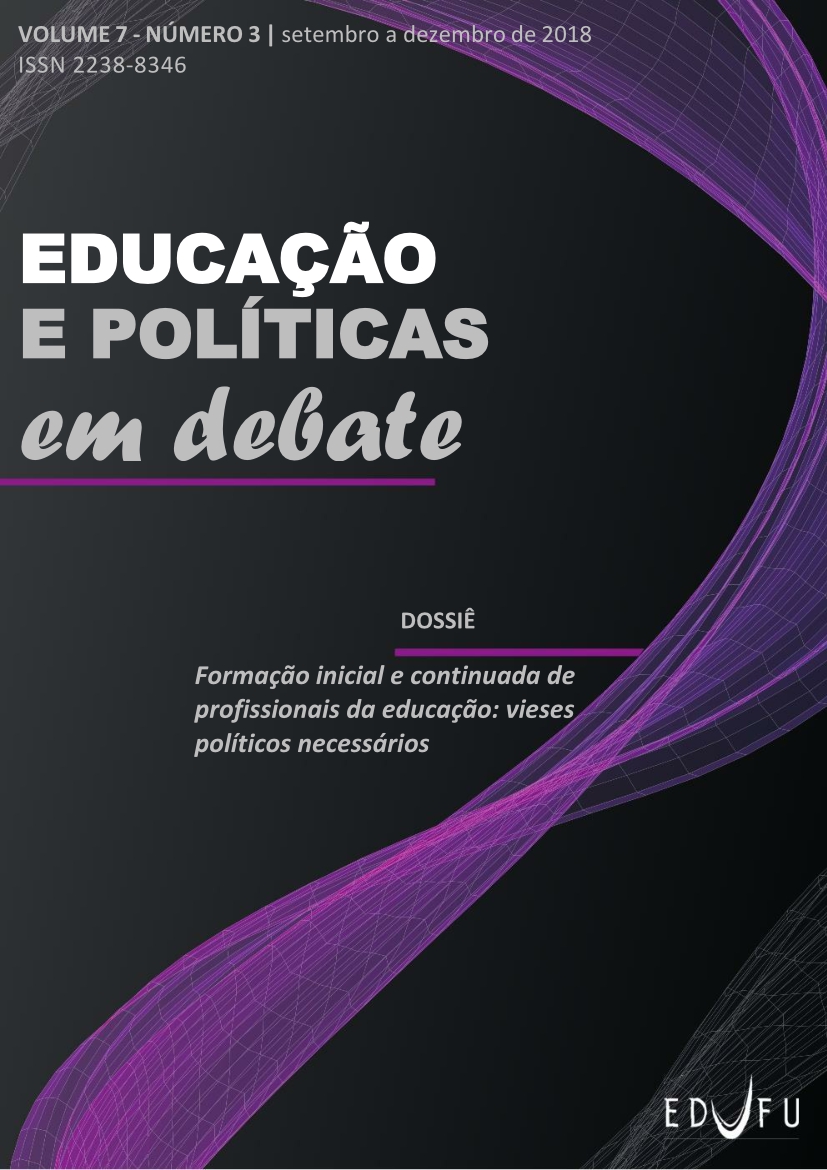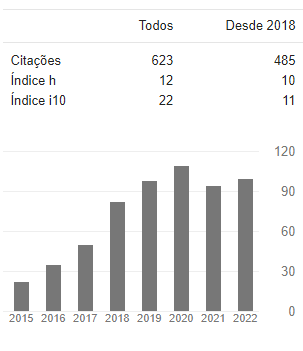Educational attendance specialized in Higher Education: elements for reflection in the light of the recent policies of inclusion of people with disabilities in Brazilian Higher Education Institutions
DOI:
https://doi.org/10.14393/REPOD.issn.2238-8346.v7n3a2018-07Keywords:
Higher Education, Inclusion, Public policyAbstract
The present text has the objective of discussing the problem of the educational service specialized in higher education in the context of recent policies of inclusion of people with disabilities in Brazilian universities, based on official documents and evidences of contradictions of practice from research. It is a bibliographical study, exploratory in nature, based on a qualitative historical approach, organized in three topics intertwined by history, beginning with an introduction, then historical aspects, later a synthesis of the main norms aimed at the inclusion of people with deficiency in the higher education in Brazil, later, summary of the research result, finishing with the considerations.
References
ALCOBA, Susie de Araújo Campos. A inclusão de alunos com deficiência na universidade: o desafio pedagógico. Tese de doutorado “Estranhos no ninho: a inclusão de alunos com deficiência na Unicamp”, São Paulo, UNICAMP, 2008.
BALL, S.J.; MAINARDES, J. (Org.). Políticas educacionais: questões e dilemas. São Paulo: Cortez, 2011.
BRASIL/MEC, portal.mec.gov.br › PNLEM› Secretarias › SECAD - Educação Continuada.
BRASIL/MEC. Lei de Diretrizes e Bases da Educação Nacional–LDB 9394/1996:http://portal.mec.gov.br/index.php. Acesso em 29 de agosto de 2018.
BRASIL/MEC. Aviso Curricular nº 277, de maio de 1996;Portaria n.º 1.679, de 1999; Resolução CNE/CP Nº 1, de 18 de fevereiro de 2002; Lei nº 10.436/2002; Portaria 2.678/02; a Portaria nº 3.284, de 2003; Decreto nº 7.611, de 2011; portal.mec.gov.br/. Acesso em 17/05/2018.
BRASIL/MEC/INEP. Referenciais de Acessibilidade na Educação Superior e a Avaliação in loco do Sistema Nacional de Avaliação da Educação Superior (SINAES) parte I – avaliação de cursos de graduação, 2013.
BRASIL/MEC. LEI Nº 13.409, dezembro de 2016: http://portal.mec.gov.br/index.php. Acesso em 29 de agosto de 2018.
ONU. Declaração Universal dos Direitos Humanos, 1948. Organização dos Estados Americanos. Convenção da Guatemala, 2001.
SANTOS, Tatiana; HOSTINS, Regina Célia Linhares. Política Nacional para a Inclusão no Ensino Superior: uma Revisão da Legislação - UNOPAR Cient., Ciênc. Human. Educ.,Londrina, v. 16, n.3, p. 194-200, 2015.
UNESCO/WCEFA. Declaração Mundial sobre Educação para Todos. Nova York, março de 1990.http://www.regra.com.br/educação.
VALDÉS, M. T. M. et al. Inclusão de alunos com NEE no Ensino Superior: O caso da Universidade Estadual do Ceará. In: Congresso Brasileiro de Educação Especial e Encontro da Associação Brasileira de Pesquisadores em 101 Educação Especial, Anais, 11-14 de novembro de 2003, São Carlos: UFSCar, 2003, Fortaleza, 2003. p.271.
https://pt.wikipedia.org/wiki/Declara%C3%A7%C3%A3o_de_Direitos_de_1689. Consultado em 02/09/2018
https://pt.wikipedia.org/wiki/Declara%C3%A7%C3%A3o_dos_Direitos_do_Homem_e_do_Cidad%C3%A3o. Consultado em 02/09/2018.
http://www.direitoshumanos.usp.br/index.php/Documentos-anteriores-%C3%A0-cria%C3%A7%C3%A3o-da-Sociedade-das-Na%C3%A7%C3%B5es-at%C3%A9-1919/declaracao-de-direitos-do-homem-e-do-cidadao-1789.html. Consultado em 02/09/2018.
https://pedromiiguel.jusbrasil.com.br/artigos/386326597/voce-sabe-o-que-e-o-cilindro-de-ciro. Consultado em 01/09/2018
http://dhnet.org.br/direitos/anthist/marcos/cilindro/index.htm. Consultado em 01/09/2018.

































